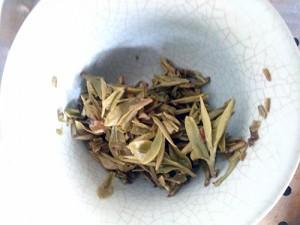One of the myriad of reasons why loose leaf tea is superior- too put it mildly- to teabags is that loose leaf tea can be re-infused many times. If you take that into consideration, plus the quality difference, you will find loose leaf tea offers much better value than teabags.
For teabags- at least conventional teabags- the contents are basically fanning or dust. Small broken bits of what used to be tea leaves, processed in the CTC (Crush Tear Curl) manner. The smaller bits mean that these ‘leaves’ has much larger surface area in contact with the hot water, allowing it to dissolve faster, releasing the compounds that provide the taste.
What it also means is that for tea bags, the first infusion is generally the only infusion. The quick dissolution means that all the substances are released in its entirety from the get-go, leaving nothing for the next.
Why can I re-infuse my tea leaves?
In contrast, for loose leaf tea, you can see over the course of brewing, it unfurls from a tightly rolled leaf (depending on which type) to a large leaf. In the process of unfurling, more surface area of the leaves are in contact with the water, allowing more substances to be dissolved.

For example, if you are brewing a Wuyi Yancha, the initial few brews may be more broth-y and greater hint of astringency, but by the 5th brew or so, the polyphenols may be fully dissolved and while the liquor feels thinner, it is sweeter, giving it a markedly different feel from the initial couple of brews.
How many times can I re-infuse my tea leaves?
The obvious answer is until there is no more that taste but as a rough guideline:
Green Tea: 3-4 times
White Tea: 3-4 times
Yellow Tea: 3 times
Oolong Tea: 4-9 times
Black Tea: 3-4 times
Dark Tea: 5-10+ times
Obviously several factors come into play such as quality of leaves and how it is being brewed.
If you are brewing oolong tea ‘Western style’- oh what a waste- you would probably get 3 weak brews instead of more than 5 flavorful ones.
The best way to decide if you should brew at least another time is to smell the wet leaves. If it is still aromatic, you can go for another brew. If it smells flat, then it’s most likely time to empty it.
Do I need to infuse for a longer period?
Generally speaking, the answer is yes.

As a rough guideline, you can start with the suggestions below:
i) Green, white and yellow tea- ~ 30 seconds increase per additional infusion
ii) Black tea- ~30 seconds increase per additional infusion for gongfu brewing, 1 minute for ‘western’ brewing
iii) Oolong and dark tea: ~ 15 seconds per additional infusion
However this is only a general guideline.
For tightly compressed dark teas and certain oolongs, especially Taiwanese oolongs, because the teas are so tightly rolled and compressed, the initial couple of infusions may actually need to be longer to get it to unfurl.
For example, when it comes to toucha, the tight compression means that the first couple of infusions are probably more of a warming up nature to get the leaves to show its character. Hence depending on the toucha in question, often I start with a longer infusion time for the first 2 brews and dip 10-20 seconds for the 3-4 brew and ‘reset’ the counter again.
The Joys of Multiple Infusions
The ability to go for multiple infusions is delightful in many ways.
The most intuitive one is that of cost savings. If you can infuse your tea 3 times, you divide the cost per cup by 3.
The second is more significant for oolong and dark tea- improving your technique and understanding of the tea in question.
A point I constantly make is that teas that bear the same name are not created equal, nor should they all be brewed in the same manner. Seldom do I get it ‘right’ on the first try and in-brew adjustments is one of the most important skills to be acquired.
Multiple infusions help me to get the most out of my samples- of course more often than not I need more than 1 serving to nail it.
Thirdly is the joy of observing the subtle changes from brew to brew- whether you want to drink like a wine lover (i.e. picking out flavors) or a tea lover (i.e. savoring the holistic sensation)- tea transforms itself over several brews.
So don’t be so quick to throw out your tea leaves, it may well be able to go for another infusion.
See more articles related to brewing tea
